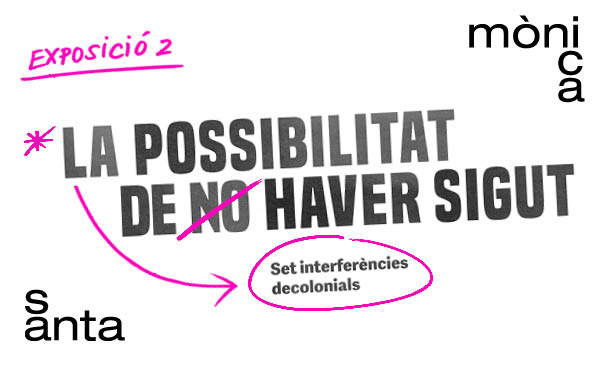What are you looking for?
You might be looking for...
Dove finisce la Terra e dove inizia il Mare?
Ida Barbati

Obra
Los mapas son herramientas de poder, utilizados para controlar, dominar y colonizar territorios y pueblos. Desde una mirada euro-occidental y colonial las cartografías de los territorios tienen la pretensión de hegemonizar su punto de vista; una mirada centralizada y universal desde donde escribir la verdad única. Bajo esta perspectiva, conforman una onto-epistemologia que construye nuestra mirada y nuestra subjetividad. Mapear cuadriculando es el mundo es trazar las líneas de la conquista. Como proyecto capitalista-colonial, Europa delimita sus fronteras y dibuja territorios colonizados a través de líneas rectas violentas y falaces.
Las cartografías pueden ser reconocidas como representaciones ficcionales, que podemos intervenir trazando líneas de fuga, desplazamientos orgánicos entre montañas y ríos, navegar cambiando las coordinadas que utilizamos como referencia, creando puntos de vista desde donde re-aprender para re–situarnos.
En este trabajo intervengo la imagen de la Tabla Rogeriana, un mapa mundi cartografiado por Al Idrisi en el siglo XII, con una poesía sobre la de-construcción de la blanquitud.
Observar el territorio desde una representación no hegemónica implica re-pensar el lugar desde donde se habla, narra y aprende y, en general, poner en cuestión las narrativas sobre la construcción de la identidad europea blanca.
Re-aprender para re–situarse es recorrer la multiplicidad de genealogías que nos habitan, desde las diversidades de historias, culturas, idiomas y sonidos que nos atraviesan, de-re-construyendo narrativas e identidades, más allá del relato único-blanqueado.
Maps are tools of power, used to control, dominate and colonise territories and peoples. From a Euro-western and colonial point of view, the cartographies of territories have the pretension of hegemonising their point of view; a centralised and universal view from which to write the only truth. From this perspective, they form an onto-epistemology that constructs our gaze and our subjectivity. To map by gridding the world is to draw the lines of conquest. As a capitalist-colonial project, Europe delimits its borders and draws colonised territories through violent and fallacious straight lines.
Cartographies can be recognised as fictional representations, which we can intervene by tracing lines of flight, organic displacements between mountains and rivers, navigating by changing the coordinates we use as reference, creating points of view from which to re-learn in order to re-situate ourselves.
In this work, Ida Barbati intervenes in the image of the Rogerian Tablet, a map of the world mapped by Al Idrisi in the 12th century, with a poetry about the de-construction of whiteness.
To re-learn in order to re-situate oneself is to go through the multiplicity of genealogies that inhabit us, from the diversity of histories, cultures, languages and sounds that cross us, de-re-constructing narratives and identities, beyond the unique-whitewashed story.
Links of interest:
Ida Barbati / Dove finisce la Terra e dove inizia il Mare? ¿Dónde termina la Tierra y dónde comienza el Mar? - Polysemies of silence
Production: Ida Barbati i Libreria Tamu
Aknowledgements: Guerthy Gutiérrez, María Paz Aedo Zúñiga and Jiser
Ida Barbati (1990) lives and resides in Barcelona. She trained in Visual Arts at the Laba in Florence (2018) and completed her studies with a Master in Arts and Education at the Universitat de Barcelona (2020) and a Master in Philosophy for Contemporary Challenges at the Universitat Oberta de Catalunya in Barcelona (2022). She is currently a PhD student at the Faculty of Arts of the Universitat de Barcelona.
In her artistic practice she explores different media, in particular installation, performative action and intervention both in images and in public spaces. The body is a common element in her work and is understood as a porous materiality that carries a strong poetic and political charge. Hence, her line of research develops from those affects, experiences and memories that traverse her corporeality and that overlap with feminist politics and theories. Since 2021, she is interested in carrying out an artistic practice based on collaborative and participatory processes. Together with the artist Valentina Gaia Lops, she is co-coordinator of the collective artistic research project Cuerpos en Escucha, which is developed from the activation of spaces of co-creation and multidisciplinary experimentation linked to the territory; and with the artist Guerthy Gutiérrez, she co-coordinates the project In-Tensión based on the construction of collective narratives on the theme of migration, understood as a territorial, corporal and conceptual displacement.
